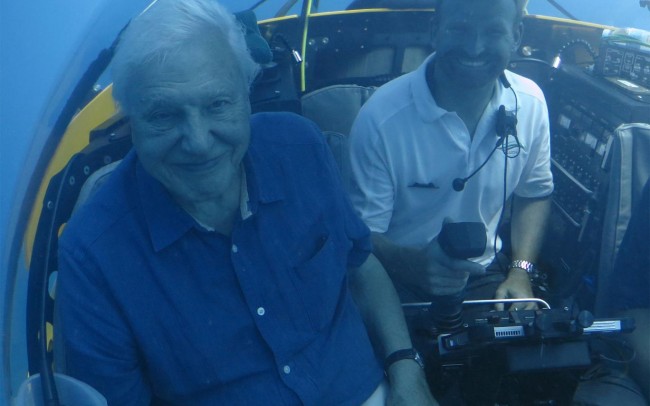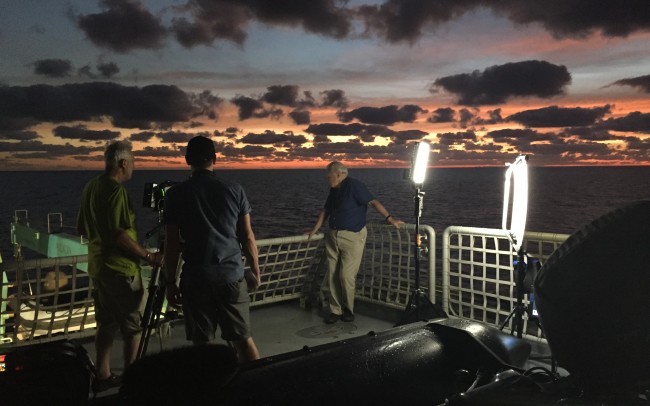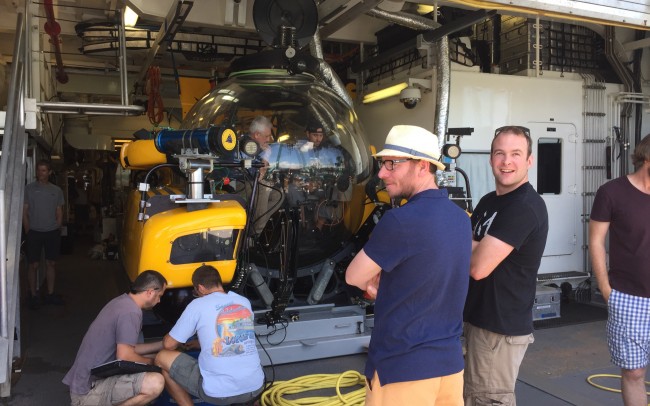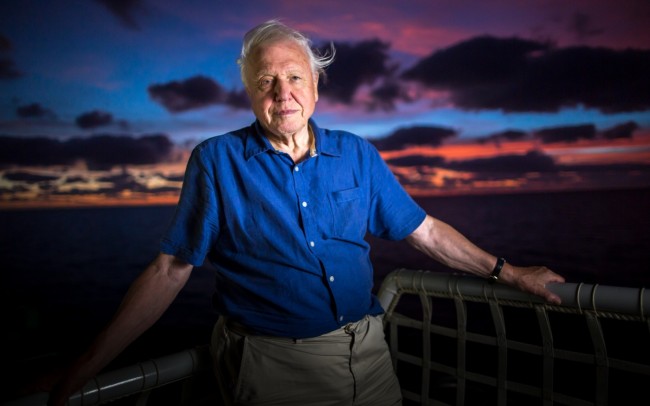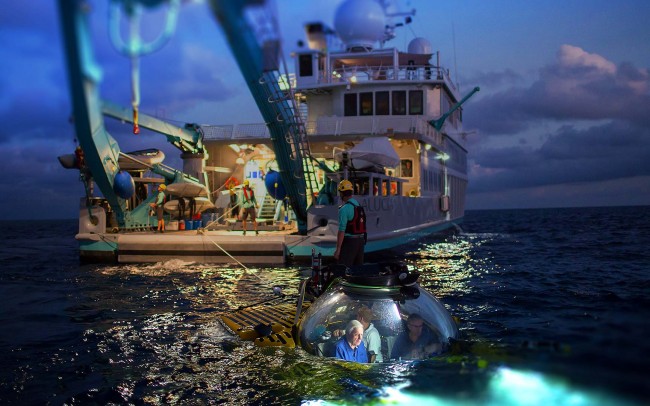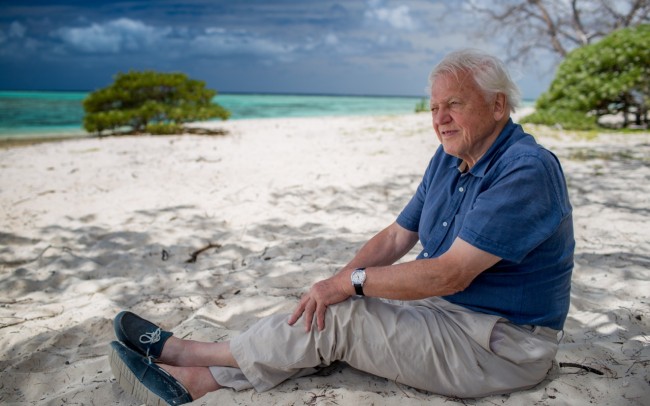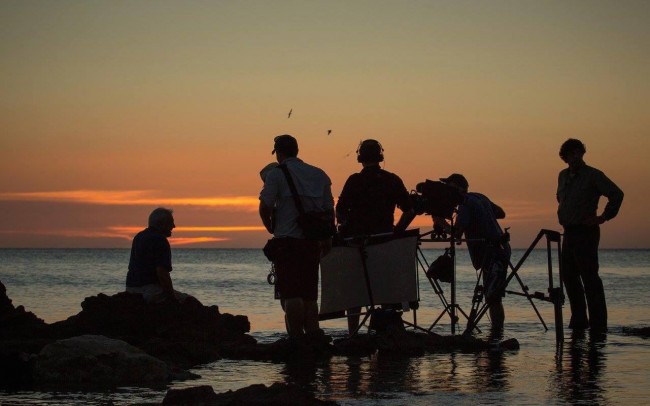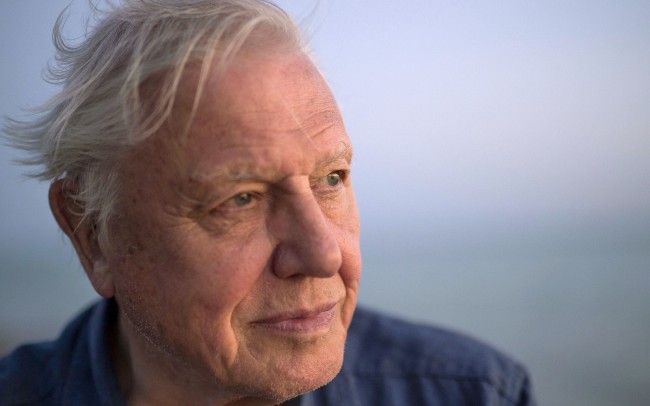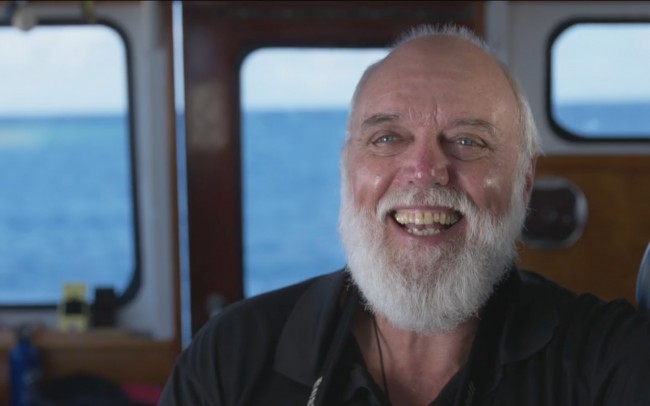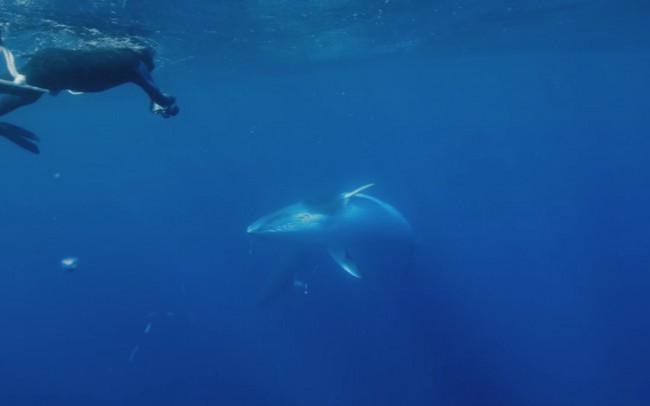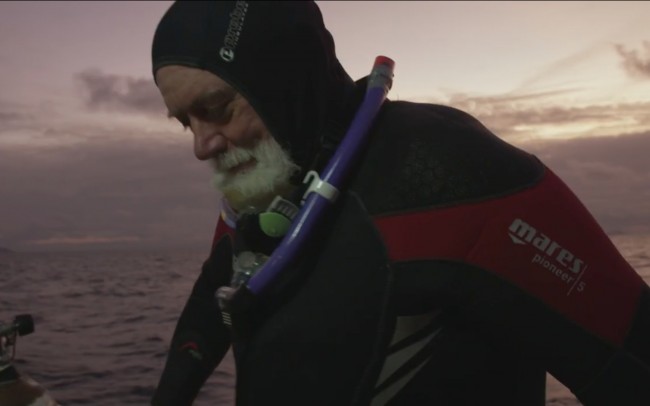David Attenborough’s
Great Barrier Reef
Director (Ep 4 'Reef Diaries', 1 x 60'), Camera (Eps 1-3, selected scenes, 3 x 60'), CBS / BBC 1
I both shot and directed the 60′ international making-of episode for this series and filmed much of the footage for major sequences in the main show, which aired on BBC 1 over new year 2016.
Among the highlights were filming Sir David as he undertook the world’s first ever submersible dive on the reef, as well as filming alongside one of the reef’s most charismatic visitors – Dwarf Minke whales.
Besides capturing the story behind the remarkable wildlife we encountered, a central part of my role was capturing David’s personal journey on this especially poignant trip – almost 60 years since his very first visit to the reef for ‘Zoo Quest’ in the 1950s.
The Trouble with Subs
In order to get David close to the wildlife of the reef, the team needed to get him underwater. This meant sending him on the very first submersible dive that had ever been attempted on the Great Barrier Reef.
With space for only three people inside the mini-submersible, conditions were tight. I filmed the sequence above (from the beginning of episode 1) as submarine pilot, Buck, briefs David on some of the more intimate realties of submersible living…
The sequence to the left tells the behind-the-scenes story of the dive itself.
Filming Dwarf Minke Whales
One of the reef’s largest visitors was only discovered 25 years ago: the dwarf minke whale. I went on a solo mission to film Dr Alistair Birtles – the world expert on this intriguing species – observing the whales on their annual migration.
One of the biggest challenges of the shoot (beside the odd curious reef shark) was kit wrangling. As cameraman and location director, I had my work cut out to fit ten cases of lights, DIT, lenses and camera equipment into the somewhat modest quarters on the research boat. Nonetheless, the experience of diving with these remarkable animals was truly magical.
The scene here combines both my own footage of Alistair at work and stunning footage of the whales themselves shot over several years by research scientist, Dean Miller.
